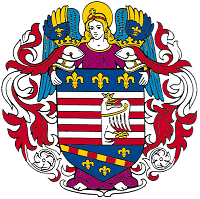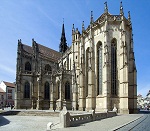About Košice

Košice, with almost three hundred thousand inhabitants the second largest city in Slovakia, has been the natural metropolis of Eastern Slovakia ever since the time of its foundation. From what existed at the end of the 12th century in the form of a royal residence, following the influx of colonists from Lower Saxony during the second half of the 13th century, there grew a town in the true sense of the word, encircled with fortified walls. The mediaeval history of the city is closely tied up with the growth of trade and crafts. Košice was at the same time both a focal point for many crafts which became associated into dozens of guilds and a market centre bringing together surplus production from a wide surrounding area for subsequent trading in the Balkans and, more importantly, in Northern Europe around the area of Hanseatic towns. Košice remained an important name in long-distance trade throughout the whole of the 14th and 15th centuries. It was at this time that town gained the privileges of a free royal city, one of the largest and richest in the whole of Hungary. This was also period when the city´s most beautiful historic buldings were erected.

After this period of economic bloom and relative peace, in the 16th and 17th centuries Košice went through some more eventful times as the country came under constant threat of Turkish invasion, and was then rocked by series of social uprisings. As a result of these frequent wars, Košice was transformed into the strongest city fortress in Hungary and became the headquarters of the Captain-general. Despite all the clashing of weapons, it was at this time that the city became a seat of university and secondary schooling in connection with the re-Catholicization movement. Printing houses also started up operations here, and several new churches were built. The birth-pangs of the modern age gave way to peace and steady growth through the 18th and 19th centuries.  New baroque architecture caught on, to be overtaken in turn by classicism and romanticism, and as the nobility took up residence in the city there was increasing patronization of the arts and the theatre and development of refined social life. By the end of the 19th century Košice had become one of the most significant industrial centres in Hungary. The city increased in beauty as well as in size, and took on the character of an ethnic melting-pot containing Germans, Hungarians, Slovaks and Jews, all with their various religions and cultures. Košice maintained its cultural and ethnic variety up until the middle of 20th century, despite the fact that from the end of 1918 it became part of the Czechoslovak republic. The German occupation of 1938-1945 ultimately brought with it renewed economic and demographic decline, and in particular the annihilation of the significant Jewish community in the city. At the end of Second World War, Košice became for a time the capital of the reconstituted Czechoslovakia.
New baroque architecture caught on, to be overtaken in turn by classicism and romanticism, and as the nobility took up residence in the city there was increasing patronization of the arts and the theatre and development of refined social life. By the end of the 19th century Košice had become one of the most significant industrial centres in Hungary. The city increased in beauty as well as in size, and took on the character of an ethnic melting-pot containing Germans, Hungarians, Slovaks and Jews, all with their various religions and cultures. Košice maintained its cultural and ethnic variety up until the middle of 20th century, despite the fact that from the end of 1918 it became part of the Czechoslovak republic. The German occupation of 1938-1945 ultimately brought with it renewed economic and demographic decline, and in particular the annihilation of the significant Jewish community in the city. At the end of Second World War, Košice became for a time the capital of the reconstituted Czechoslovakia.
World War II was the greatest disaster for European cities in this century. Košice was lucky during World War II. Except the bombing in 1941, the city was saved from air raids and destruction. However, the following years had not saved either the city or its historical core. Change of ownership, neglect of maintenance of the state owned residential and non-residential buildings had caused that the main part of the historical core was prepared for physical liquidation. However, there still remain many buildings from various periods of history which are worth seeing.
External links:
